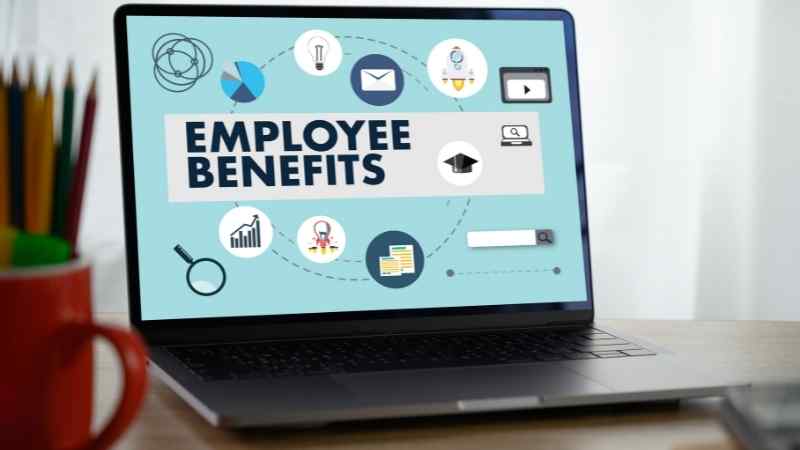Employee Benefit Outlook for 2021
The year 2020 was notable for the COVID-19 pandemic changing not only how and where people work, but also shifting (often dramatically) employee benefit needs. In 2020, benefits such as telehealth and mental health services that may have been viewed primarily as “nice-to-have” perks suddenly became necessities. Human resource departments were forced to quickly improve digital capabilities to ensure employees continued to receive the information required to make benefits selections for their rapidly changing needs. Organizations also had to address these issues while simultaneously determining how to remain profitable and competitive in a wildly unfamiliar and uncertain business environment.
The so-called “new normal” doesn’t mean that traditional benefits are going away. But, the changes necessitated by the pandemic have resulted in a new array of unconventional and personalized offerings. As a result, employers are encouraged in 2021 to carefully review plan offerings, integrate pandemic-related benefits solutions into sustainable longer-term offerings and improve employee benefit communications.
Telehealth Vaults Up the Priority List
In 2016, the National Business Group on Health’s Large Employers’ Health Care Strategy and Plan Design Survey found that 90 percent of large companies offered telehealth benefits, but that only 3 percent of employees used such benefits. Flash forward to 2020: likely as a result of greater employee demand for telehealth during the pandemic, 53 percent of the large employers polled in the 2020 edition of the survey indicated that adding more virtual care solutions would be their highest priority in 2021 and beyond.
While telehealth is expected to play a critical role in delivering healthcare in 2021, plan participants will still want (and need) in-person visits with providers. This highlights the need for tiered benefit structures that include both virtual and in-person options for participants. In the push to provide virtual care benefits, employers still must perform adequate due diligence to ensure that telehealth providers have the appropriate cybersecurity measures in place to protect patient privacy needs. Remote monitoring, Health Insurance Portability and Accountability Act of 1996 (HIPAA) compliance and other sensitive information safeguards should be standard requirements for any provider. The employer’s responsibility extends to ensure its contracted providers also protect the personally identifiable information (PII), personal health information (PHI) and electronic PHI (e-PHI) of employees.
The employer may also want to consider…
Addressing the Growing Mental Health Crisis
Similar to telehealth, the need for mental health services increased in 2020. Research conducted by the Society for Human Resource Management (SHRM) showed that the pandemic affected nearly every aspect of employee lives. Employees reported negative effects on their sleeping, eating, and exercising habits, as well as increased anxiety related to their health and finances.
Employers can play an important role in addressing these issues by gaining an understanding of employee needs and adjusting benefit offerings to better meet those needs. Technology has helped provide effective ways to access mental health care, including allowing employees to remain anonymous while seeking help. Employers may want to consider expanding employee assistance programs (EAPs) offerings and making EAPs more accessible to employees.
Employers also should watch for new mental health stressors that may arise during the pandemic. Clear and consistent communication, as well as management training to recognize at-risk behaviors, will be key factors in maintaining an emotionally healthy workforce in the year ahead.
Digital Benefit Communications
Many of the benefits crucially important to employees today were not key features of benefit offerings even just a year ago. Along with the need to timely communicate changing benefits, employers are looking for ways to communicate benefit changes to employees who are working remotely. There are a variety of digital communication strategies that employers can consider using to engage their employees, including smartphone apps, desktop-ready modes of communication, text messages, social media posts, and QR codes to link together various digital programs. Videos, as well as virtual guided programming, also may be useful tools in educating employees about their benefits. Employers can work with their service providers to analyze communication strategies and identify opportunities to incorporate these new technologies.
While increasing online communications is an obvious focus area, many employers have deskless employees (such as hospitality, construction and manufacturing workers) who may have difficulty accessing digital communications. Management can play a meaningful role in delivering messages to employees, but proper training and resources are critical to ensure a consistent message is given to employees to help them make informed benefit decisions.
Insight: Turn Quick Fixes into Sustainable Plans
While no one can predict what 2021 will entail, addressing employee benefit needs is a clear priority for employers. The pandemic has highlighted the importance for employers to provide benefit options reflective of employee needs and the importance of a robust benefit communications strategy.
A new year brings an opportunity for organizations to rethink and improve their benefits offerings for 2021 and beyond.

